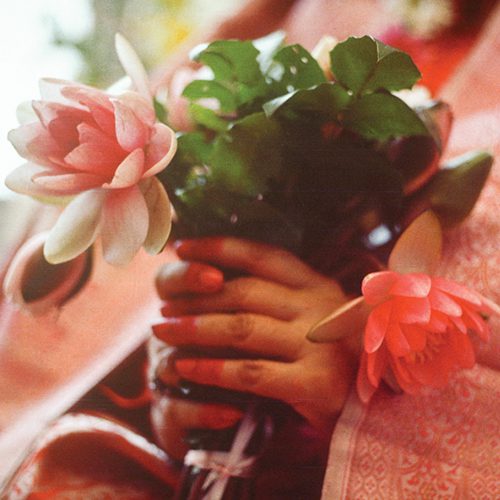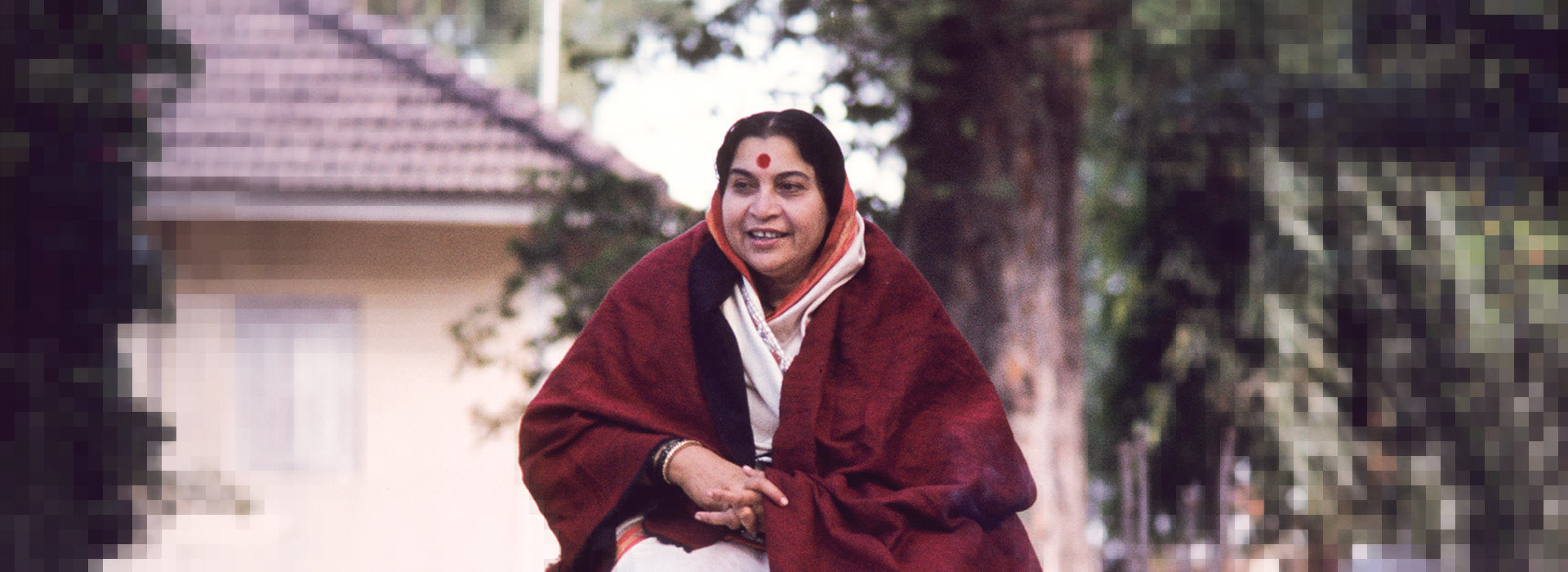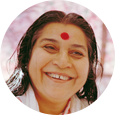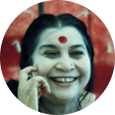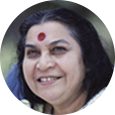Biography
Shri Mataji Nirmala Devi (née Nirmala Salve) was born to a Protestant Christian family in Chhindwara – a town in the geographic centre of India. She was born into the Salve family that traces their roots to the royal Shalivahana dynasty, which dates back over 3000 years. During pregnancy, her mother had a strong desire to see a tiger. When eventually on a hunting trip with her husband she did sight one in the forest, her parents were overcome with joy and knew at that moment that there was something very special about their child. Shri Mataji Nirmala Devi arrived at midday on the 21st of March 1923, on the Spring equinox at a time when the planets were aligned in a most extraordinary way. The uniqueness of her birth was affirmed as she arrived absolutely clean, which prompted her grandmother to suggest the name Nirmala, which means immaculate.
When Shri Mataji was four years old, the family then moved to Nagpur where she was brought up with her 10 siblings in a happy, comfortable household. Her father, Prasad Salve, was a lawyer and scholar, fluent in 14 languages and translated the Qur’an into Hindi. Her mother, Cornelia, was the first woman in India to receive an honours degree in mathematics.

Her parents both shared a deep love of their country, its great spiritual tradition and values. They were actively involved in the struggle for Indian independence. As a child, Nirmala frequently stayed with Mahatma Gandhi in his ashram. Due to their affiliation with the Swaraj movement, her parents were often jailed for their participation in this nonviolent movement to free India. Thus, at a very young age Nirmala, already showing signs of great leadership, took responsibility to care for her older and younger siblings during their parents’ absence.
In her teens, she, too, joined this struggle for independence by becoming a youth leader, bravely leading picket lines and defying armed police. She also was jailed and tortured for her participation in the Quit India Movement but this never affected her determination to take part in the fight for the freedom of India. In 1942 she chose to study medicine because as she later said that “I studied a little bit of medical science to understand what a human being is.” (22/12/73) However, in 1947 these medical studies were cut short due to the troubled times, so her family then thought it would be timely for her to marry.
So it was on the 7th April 1947, that Shri Mataji, then the 24-year-old Miss Nirmala Salve married Chandrika Prasad Srivastava and settled into married life, supporting her eminent husband in his diplomatic career and raising their two daughters. From this time to 1970, Shri Mataji courageously stood against prejudice, offered protection to those in need, nourished a growing family, farmed the land, encouraged culture through music and film, constructed numerous homes, engaged in charitable work, fulfilled everyday household duties, was a loving wife and mother, a supportive sister and eventually a grandmother.
All the while, she was deepening her perception of human nature, focusing her attention on the best way to help human beings rise to their highest potential. She understood that this transformation could only occur through the process of Self realisation, which is the activation of the inbuilt subtle energy present in all of us. Her father had intuitively known his daughter’s potential. Shri Mataji recounts: “My father felt that I would do something great in this life. I don’t know if he dreamed it or simply understood it, but all the time he used to say, ‘you have to find out the way of giving en-masse realisation.’ By realisation he was meaning the need for a deep, spiritual awakening in people.” (9/7/86)
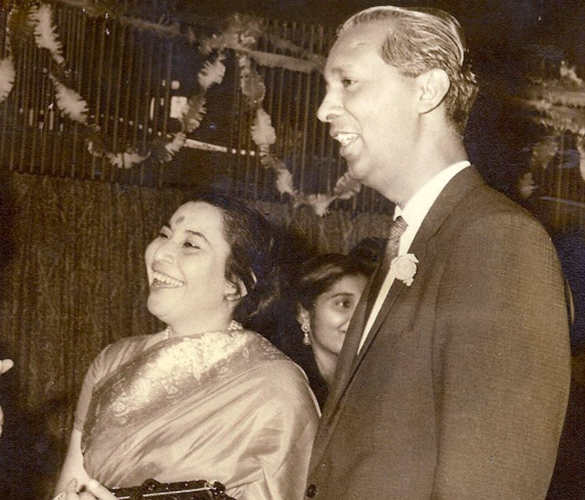
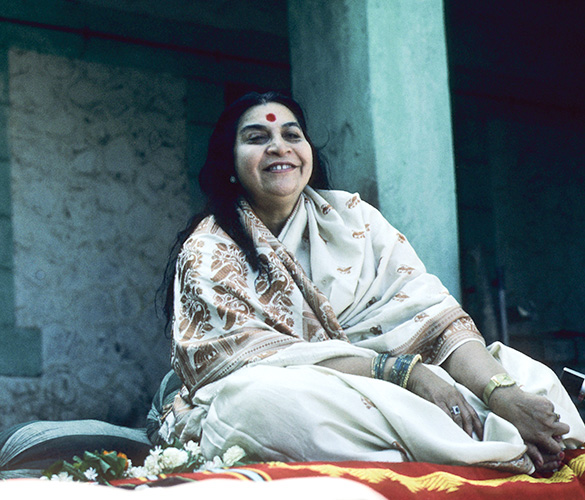
Then on 5th May 1970 on the seashore near the village of Nargol, just before dawn, having meditated all night she had a profound experience. She describes it thus:
“I was all alone and I felt very good. There was no one around to say a word. And then, in meditation, I felt that the time had arrived when the Sahasrara [the crown chakra] must be opened. At the moment I desired for the opening of the Sahasrara, what I noticed was that the Kundalini rose like a telescope within me, opening one after the other, travelling upwards. It was like the colour of molten, red-hot iron. Then I saw the external structure of the Kundalini that kept rising up, creating sounds at each chakra. The Kundalini rose up to pierce the Brahmarandhra.” (29/10/95)
The Brahmarandhra is the fontanel bone area at the top of the head. The experience Shri Mataji described was that of Self realisation, the connection that enables a new awareness of spiritual dimensions that so many desire.
“I felt at that moment whatever energy was there above suddenly entered within me like a cool breeze from every direction. I saw the whole thing open and a big torrential rain of breeze started flowing through my head all over. I felt I was lost now, I was no more. It is only the grace that was there. I saw it completely happening to me.” (29/10/95)
First video about Shri Mataji and Sahaja Yoga (ca. 1990)
Shri Mataji knew that this experience was the trigger for her to be able to start giving Self realisation and raising the awareness in human beings.
“It was then I realised that there was no harm in starting the work. The confusion was over. At last, the time had come. There was nothing to fear. This ultimately had to be done. I had come to this world for this purpose only, to awaken the collective consciousness in human beings. I thought, until people receive their Self realisation or understand their own Self, this task will be impossible. Whatever else one would have tried to do in this world would be of no use at all.” (29/10/95)
Shri Mataji continued, “I worked it out on an old lady who knew me well. When she received her realisation I was then satisfied. I felt many others could also get their realisation. It was easy to give realisation to one person. It was very easy to make one person aware, but to work it out on a collective level on the masses, some more work was needed.”
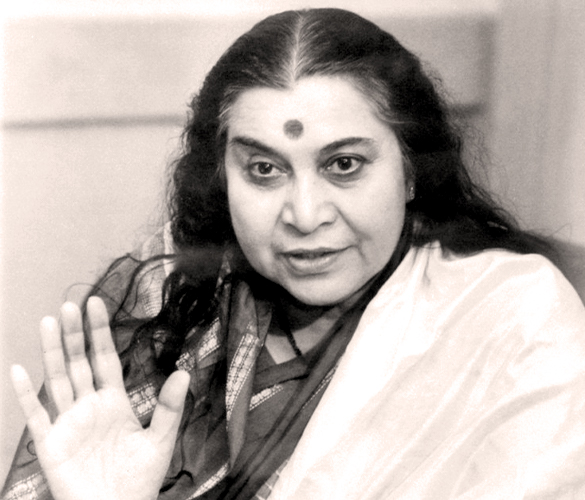
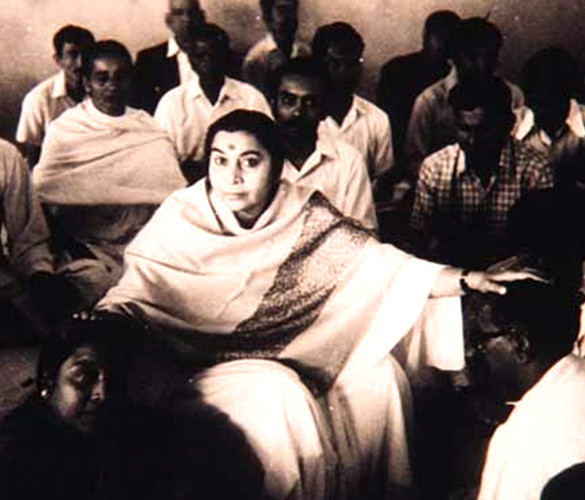
So she gathered a group of seekers around her and worked with them and eventually twelve had their realisation. She knew then that mass realisation was possible. She then gave realisation to all who were willing and worked with infinite patience, giving lectures and imparting cosmic truths skilfully in simple terms. She taught spiritual culture and clearing techniques to a growing band of followers, and Sahaja Yoga was gradually established. It was then that she became known as Shri Mataji Nirmala Devi, the Respected Pure Divine Mother.
In 1972 Shri Mataji sold her own jewellery to finance a trip to America to hold programs and give Self realisation. She felt that America would be significant in spreading Sahaja Yoga to the world. The response was disappointing, as materialism and superficiality distracted seekers from their spirituality. However, a seed was planted and she returned nine years later with much more success. In 1973 her husband was transferred to London and Shri Mataji landed on 31 December 1973 to begin her work with the seekers of the United Kingdom.
Again she was disappointed with the condition of “her seekers”, who used drugs and were physically, mentally and emotionally distraught. She worked for four years on seven people. Housing them, feeding them, clearing them, spiritually nurturing them, guiding them and eventually enlightening them. She said “I could see the defects of people but I knew that when this unconditional love will be showered on them they would come to Sahaja Yoga one day and attain God” (5/3/1989).
Eventually, in 1977 she started giving public programs at Caxton Hall in London where she lectured and worked on people individually, spending hours dealing with their problems, pouring vibrations of love and raising them up and bestowing realisation. In 1980 she began giving realisation programs in Paris, then Switzerland and in provincial cities throughout the UK. In March 1981, programs were held in Hong Kong and Australia with great success. She returned to Europe to continue her work and later that year she went back to America. Meanwhile, she was constantly travelling to India where Sahaja Yoga was thriving.
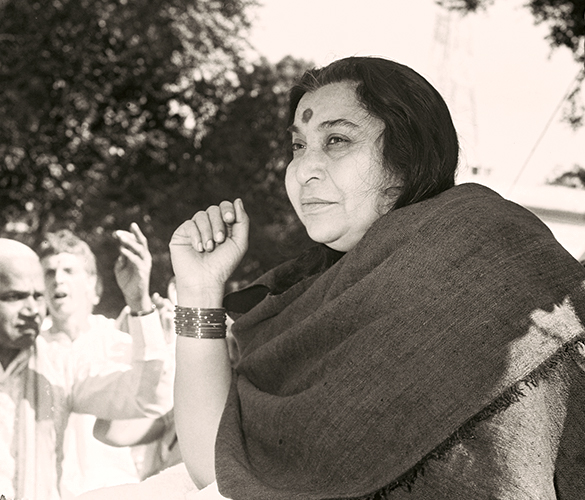
Year after year she circled the globe giving program after program and by the 1990s, Sahaja Yoga was established in over ninety countries including Russia and Eastern Europe and Shri Mataji had become a global personality, attracting media attention wherever she went, along with a succession of tributes and awards. She was nominated for the Nobel Peace Prize and Claes Nobel, the grandnephew of Alfred Nobel and Chairman of the United Earth Foundation, declared that “Shri Mataji empowers us to become masters of our own destiny.” She was invited to speak at the United Nations headquarters in New York as well as the UN Conference for Women in Beijing. Countless city and regional governments established a day in her honour.
As well as extensive travelling, public programs and appearances Shri Mataji also concerned herself on a personal level with all her followers. Without any professional staff she started centres, ashrams and retreat properties all over the world. In many countries, she founded health clinics, schools and nurseries and a refuge for destitute women in Delhi. This she did while also fulfilling the duties of the wife of a highly placed United Nations diplomat, never neglecting her close and extended family or the smooth running of her many homes.
She constructed beautiful homes, some of which were generously assigned to Sahaja Yoga and are now used as meditation and cultural centres throughout the world. For instance, near Pune India Shri Mataji designed a unique residence set in beautiful gardens she called Pratisthan which is now a meditation centre and archival museum. In Cabella Ligure Italy, the 15th century Palazzo Doria that she restored and renovated, is the headquarters of the Shri Mataji Nirmala Devi Sahaja Yoga World Foundation. It is now officially renamed Palazzo Shri Mataji Nirmala Devi.
Also gifted to the world are the thousands and thousands of public and private discourses given by her that are preserved, transcribed and translated and are freely available for the benefit of humanity. In 1995 she published a book called Meta Modern Era and previous to that, in 1979, the scholar and diplomat Gregoire de Kalbermatten, published a book called The Advent which he had written in close collaboration with Shri Mataji. There is much written about Shri Mataji and about Sahaja Yoga and since her passing, many of her notes and letters have been compiled and published. However, the greatest legacy that she left is the ability of her followers to transform countless lives by giving Self realisation as easily and freely as she did. She never charged for Self realisation. She said this potential is innate. How can you be charged for something you already have?
Shri Mataji continued to be dedicated to the propagation of Sahaja Yoga well into her 80s but eventually slowed her pace down and her public appearances diminished in later years as she spent more time with her immediate family. She fulfilled her father’s prediction that she “would do something great in this life” and she found “the way of giving en-mass realisation”, which consequently enabled human beings to evolve into a new spiritual awareness. Her work was completed. On the 23rd of February, 2011, Shri Mataji passed away peacefully at the age of 87.
